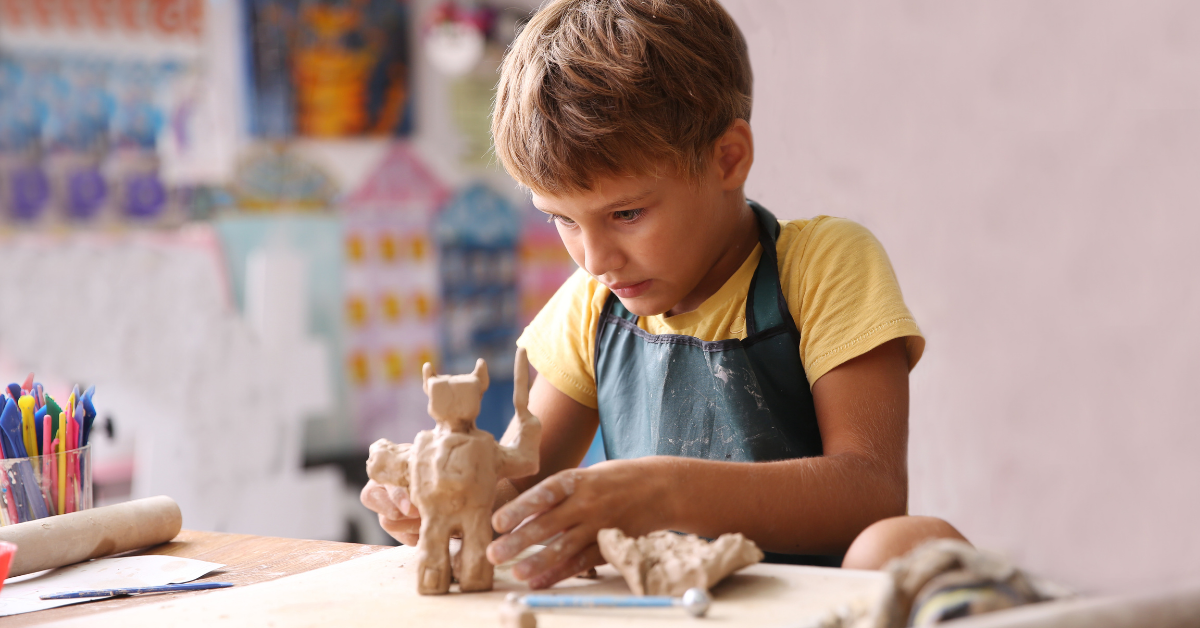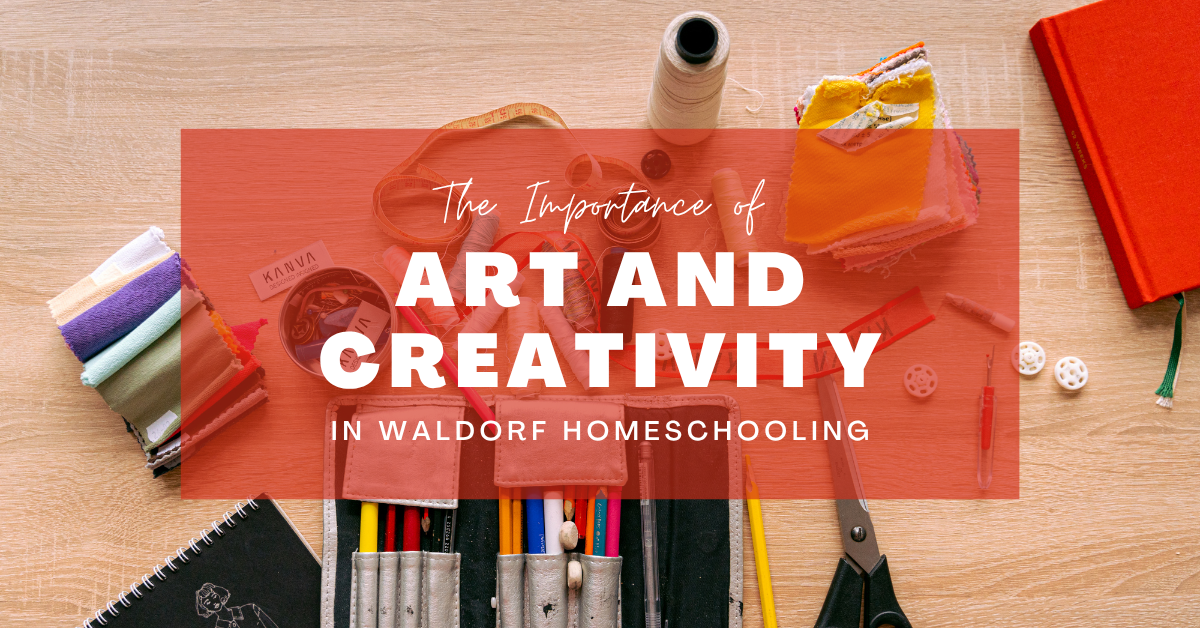Art and creativity are central to Waldorf homeschooling, serving as vibrant tools for fostering imagination, emotional expression, and holistic development in children. Rooted in the educational philosophy of Rudolf Steiner, Waldorf education emphasizes experiential learning, engaging the whole child—head, heart, and hands. This approach integrates art and creativity not as supplementary activities but as core elements of the curriculum.
If you’re a homeschooling parent exploring the Waldorf method, understanding the role of art and finding practical ways to incorporate creative projects into your child’s education can enrich the homeschooling experience.
Why Art And Creativity Matter In Waldorf Education
Art in Waldorf homeschooling is not just about teaching children how to paint or draw; it is about nurturing their capacity for free and imaginative thinking. Creativity in Waldorf education plays a significant role in developing problem-solving skills, emotional well-being, and a deep appreciation for beauty.
Cultivating Imagination and Emotional Growth
One of the foundational principles of Waldorf education is that intellectual development must be preceded by robust imaginative training. Artistic activities like painting, drawing, and sculpting encourage children to think in new and dynamic ways. For example:
- Imagination through storytelling — Waldorf educators often incorporate storytelling paired with drawing or painting, allowing children to illustrate scenes from the story. This blend of narrative and art strengthens creativity and emotional connection.
- Art as emotional expression — Activities like watercolor painting provide an outlet for children to express complex emotions visually, especially if they find it challenging to articulate feelings verbally.
Balancing Cognitive and Creative Skills
While traditional schooling systems typically emphasize rote memorization and analytical thinking, Waldorf education insists on balancing cognitive growth with creativity. Artistic activities like form drawing and clay modeling stimulate kinesthetic learning, helping children connect their thoughts with physical actions. This balance fosters an intuitive understanding of concepts, enabling students to explore topics like geometry or storytelling through hands-on, artistic expressions.
Building Confidence and Perseverance
The creative process often involves trial and error, teaching children the values of patience and persistence. Whether it’s threading a tapestry, completing a pastel drawing, or building a seasonal craft, every accomplishment builds a sense of pride and faith in their abilities.
Bringing Creativity To Life At Home With Waldorf Homeschool Art Projects
Homeschooling parents often ask how to translate the principles of Waldorf creativity into practical daily routines. The key is to incorporate simple, intentional art projects that align with both your child’s developmental stage and the seasonal rhythm of your curriculum.
Introduction to Seasonal and Nature-Based Art
One of the cornerstones of Waldorf homeschooling is its connection to nature’s rhythm. By focusing on seasonal themes, you can create projects that celebrate the changing of seasons, fostering a child’s bond with nature.
Here are some nature-inspired ideas:
- Autumn leaf rubbings — Collect vibrant fall leaves, place them under thin sheets of paper, and rub crayons over them to reveal their intricate patterns.
- Winter beeswax candle making — Introduce your child to beeswax sheets and teach them to roll candles, linking art with a practical craft.
- Spring flower pressing — Use fresh blooms to create pressed flower bookmarks or cards.
- Nature weavings — Create small looms with twigs and yarn, and encourage your child to integrate natural elements like feathers, leaves, or grasses into the weaving.
These activities not only inspire creativity but also encourage children to observe and appreciate the natural world.

Wet-on-Wet Watercolor Painting
This method, quintessential to Waldorf art, emphasizes the process of painting rather than the end result. Here’s how to guide your child:
- Prepare the materials — You’ll need watercolor paper, natural pigments, and a jar of water.
- Wet the paper — Lightly soak the paper before applying color, allowing the paints to flow and blend smoothly.
- Focus on experience — Encourage your child to play with color and observe how the pigments interact, creating a meditative and calming practice.
The beauty of this activity is that it allows for freeform exploration without rigid boundaries. There’s no “right” way to complete the painting.
Form Drawing for Cognitive and Motor Skills
Form drawing is a unique Waldorf art practice aimed at improving hand-eye coordination, inner focus, and spatial awareness. Using simple patterns and symmetrical shapes, like spirals, loops, and waves, children learn how forms connect. These exercises evolve in complexity as your child grows, from simple lines in the early years to intricate geometric designs later.
Here’s how to introduce form drawing into your homeschool routine:
- Use large sheets of paper on a flat surface or chalk on a chalkboard. This provides plenty of space for expansive movements.
- Start with basic patterns, such as simple curved lines or waves, and gradually introduce more intricate forms.
- Encourage movement with the whole arm, which helps integrate motor development with creative focus.
Art As Part Of Everyday Learning In Waldorf Homeschooling
Art in Waldorf education extends far beyond “art class.” It flows seamlessly into other subjects, creating a multisensory learning experience. Whether it’s illustrating a historical timeline, singing songs related to seasons, or turning math lessons into geometric drawings, integrating art across the curriculum deepens understanding and engagement.
For instance:
- Math through artistic expression — Teach fractions by dividing circles into segments for mandala drawing. The symmetry of these designs builds an appreciation for mathematical patterns.
- History meets storytelling and painting — Have your child illustrate key historical events as you narrate them. For example, during a unit on ancient Egypt, you might craft hieroglyphs or pyramids.
- Science with form and texture — Encourage your child to create clay models of animals or plants as part of a botany or zoology unit.
These methods bridge the gap between academic and creative pursuits, making learning both fun and meaningful.
How To Build A Home Art Environment
To fully nurture creativity in your homeschool, it’s helpful to have a well-organized and inspiring space dedicated to art. Here are practical tips to build a Waldorf-inspired art environment:
- Choose natural materials — Opt for beeswax crayons, watercolor paints made from natural pigments, and cotton or wool yarn for crafts. These materials feel pleasant to touch and align with Waldorf’s emphasis on natural, wholesome experiences.
- Keep tools accessible — Organize supplies in open baskets or on labeled shelves so children can independently choose what they need.
- Create space for display — Hang a corkboard or designate a wall for showcasing your child’s artwork. This validates their effort and makes the process feel communal and celebratory.
You don’t need a dedicated studio or expensive supplies—just a small, thoughtful corner of your home where creativity can bloom.
Encouraging Open-Ended Artistic Expression
Unlike rigid art programs, Waldorf art encourages open-ended exploration rather than striving for a predetermined result. By giving children control over their art practice, you allow them to take risks, experiment, and find their unique artistic voice. Here are some ways to support open-ended creativity:
- Offer prompts rather than instructions. For example, instead of saying, “Draw a tree,” suggest, “Use colors to show how you feel about trees in autumn.”
- Celebrate effort, not outcomes. Praise their creative choices and the time they invested, rather than critiquing final pieces.
- Allow for imperfection. Part of the creative process is learning that mistakes and accidents can be transformed into something beautiful.
When art becomes a practice of self-expression rather than performance, children develop confidence and originality.
The Lasting Impact of Art in Waldorf Homeschooling
Art in Waldorf homeschooling isn’t simply an aesthetic choice; it’s a deeply intentional way to nurture the whole child. Through creative expression, children learn to engage with the world in a way that is imaginative, thoughtful, and heartfelt. Whether through a morning of watercolor painting, an afternoon of clay modeling, or a science lesson drawn out in geometric forms, Waldorf homeschooling inspires lifelong creativity and a profound appreciation for beauty.
By consistently making room for artistic and creative practices in your homeschool day, you’re giving your child tools that go far beyond academics—tools to connect, explore, and thrive in a creative, mindful way.





